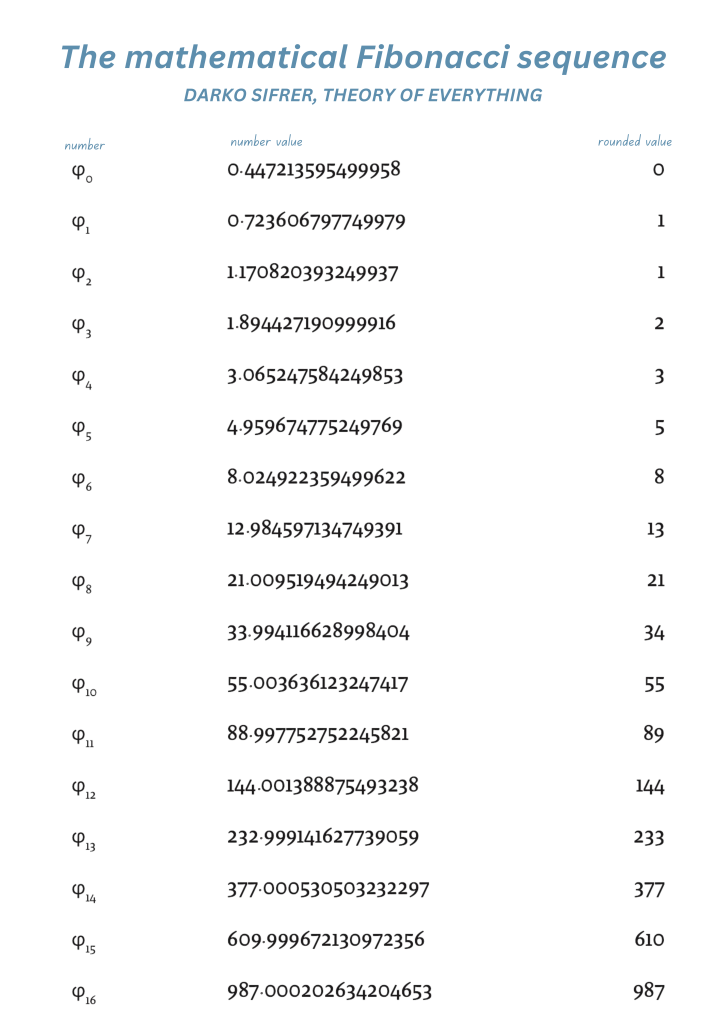The medieval mathematician Leonardo Pisano Fibonacci (1170-1250) from Pisa in today’s Italy, is known above all for having introduced the Indian-Arabic number notation to Europe, which greatly facilitated calculation operations. The new notation was, as on grounds of its practicality, quickly accepted in trading circles, which were flourishing again at the time. Among the problems that Fibonacci dealt with was an interesting set of numbers, today known as the Fibonacci sequence. He was particularly interested in how quickly rabbits could reproduce under ideal circumstances. What conclusions did he come to?
After the first month, the first pair of rabbits already mates, but there is still only one pair in the cage. At the end of the second month, the female gives birth to a new pair of rabbits, so there are now 2 pairs in the cage. At the end of the third month, the original female gives birth to her second pair, but the second female is not yet sexually mature. There are 3 pairs of rabbits in a cage. After four months, two females, the first and the second, breed new pairs so there are now 5 pairs of rabbits. The number of pairs increases in the following order: 1, 1, 2, 3, 5, 8, 13, 21, 34, 55, 89, 144, 233, … In one year, there will be 233 pairs of rabbits in the cage. The numbers obtained in this calculation form the so-called Fibonacci sequence, which can be outlined by the following formula: F(n) = F(n-1) + F(n-2). Each subsequent term is the sum of the previous two terms of the sequence, and the initials of the sequence are 0 and 1. The Fibonacci sequence is surprisingly related to the golden ratio, to the number Φ = 1.618034 (rounded to 6 decimals). If we look at the ratio between the adjacent terms of the sequence, we notice that the ratio converges towards the value of Φ. The number ϕ stands for the limit of the Fibonacci sequence.
Fibonacci came to his sequence directly from nature, although he took into account certain unrealistic assumptions, such as the fact that rabbits give birth to exactly one pair of bunnies every month. The ratio between successive numbers of the Fibonacci sequence approaches the golden ratio. Thus, the golden ratio is directly related to nature. Subsequently, the same sequence was found in snowdrop flowers, in the shape of snail shells, the number of leaves that daisies have, etc. You can even observe this sequence on yourself, just look at your hand: the 3 finger bones form a Fibonacci sequence when compared in terms of their length. One can make a shape of a canopy with his finger because the longest bone is the same length as the other two bones combined.
While observing this sequence, we can notice how rounding occurs in nature. Everything that is created in our universe is the result of rounding. In our universe there is no infinity, no infinite divisibility, no infinite speed. Thus, the numbers in the Fibonacci sequence are natural numbers (and not numbers with infinite decimals).
What about mathematical universe and the mathematical Fibonacci sequence?
In mathematics, of course, there exist infinity and infinite divisibility. Each distance can be cut in half any number of times. Before anything appears in our universe, which is made up of a finite number of particles, rounding must occur. How rounding takes place, when ideas from the mathematical world enter our universe, is beautifully illustrated by the Fibonacci sequence. Naturally, the first question that came to my mind was whether in the world of ideas, in the mathematical universe, where infinity and infinite divisibility exist, took place such a mathematical Fibonacci sequence, in which the following applied:
- there is a term called ϕ,
- the ratio between any 2 terms is always ϕ,
- each subsequent term is obtained by multiplying the previous one by ϕ,
- each subsequent term is the sum of the previous 2 terms.
These rules could be written simply as:
ϕn = ϕn-1 + ϕn-2
ϕn = ϕ . ϕn-1 = ϕ0 . ϕn
A true mathematical Fibonacci sequence is obtained when:
ϕ0 = √(1/5) and ϕ = (1+√5)/2
As an approximation, we get:
ϕ0 = 0.447213595499958….
ϕ = 1.61803398874989…
Let’s see how the numbers from the mathematical Fibonacci sequence, rounded to 15 decimals, are rounded in our universe:

When the terms of the mathematical Fibonacci sequence are rounded, the result is the Fibonacci sequence familiar to people. As we can see, the differences between the two sequences are decreasing very quickly. The results are surprising. There is a real mathematical Fibonacci sequence, which is determined by simple rules: each subsequent term is the sum of the previous two, and each subsequent term is obtained by multiplying the previous one by the number ϕ.
I also thought of a very special number ϕ0.
ϕ0 = √(1/5) = 0.447213595499958…
In the mathematical universe, in the world of ideas, there exists such a number as the square root of 1/5. In our universe, this number must be rounded, since there are no infinite decimals. As ideas from the mathematical universe enter our universe, a rounding to natural numbers occurs. So in our universe, a clover doesn’t have 3.14 leaves. It either has 3 or 4 leaves. One leaf will be a little bigger when we round down, or a little smaller than the others when we round up.
Infinite divisibility allows the mathematical Fibonacci sequence to have an infinite number of terms before the term ϕ0. When rounding occurs, however, all these terms give a rounded value of 0.
This article was first published in Slovene in: Teorija vsega–Vse skrivnosti vesolja (Zalozba Kalejdoskop, Ljubljana, 2022).